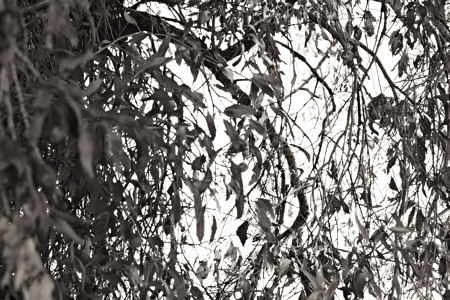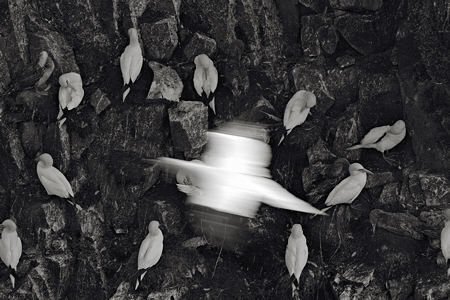Posted by Steve Durbin on November 10th, 2008

On a recent outing for another purpose, I found myself taken by the slender, skyward-reaching branches of the small trees I was among. I think it was the gray sky and the light drizzle that did it. It was a chill day, not unlike early spring, and I half remembered a William Carlos Williams poem which I’ve been unable to find. In searching, however, I came across The Botticellian Trees in Selected Poems, and the first part seemed to partially fit the subject:
more… »
Posted by Birgit Zipser on November 7th, 2008
Wedded to watery motifs, fond of reflection, and taking advantage of a brilliant, calm day in the dunes of Northern Michigan, motifs as the following were collected:

more… »
Posted by Steve Durbin on October 19th, 2008
Despite all the discussion and analysis on A&P, I seldom, if ever, carry it consciously in my head when I’m out photographing. If it happens to be there at the start, it soon flees as I focus on the subject. Sub-consciously, who’s to say? In any case, in my first outing after writing about complexity, I made some pictures that not only relate to that issue, but seem to have a loose resemblance to some of the drawings discussed. They also involve the edges June brought up recently, so I’ll have a look at that, as well.

more… »
Posted by Steve Durbin on October 14th, 2008
Posted by Birgit Zipser on October 10th, 2008
Joie de Vivre:

more… »
Posted by Steve Durbin on October 6th, 2008
Just a few miles along the Newfoundland coast from the kelp of last week is the Cape St. Mary’s Ecological Reserve, a haven for sea birds of nearly a dozen main species. Most were gone by mid-September, but there were still many thousands of northern gannets, graceful birds with gold-dusted heads and necks, and a nearly six-foot wingspan.

more… »
Posted by Steve Durbin on September 29th, 2008

Most of my photography in Newfoundland was done within a few meters of the sea. I rediscovered there some of the rock and water themes I’ve pursued closer to home, though with important differences. For example, rocks are more likely shaped by the surf, and are as often wet as dry. New waterfalls are born every time a wave rides over a rock in the tidal zone. But the most interesting difference was the presence of living subjects at the rock/water interface, and of these, my favorite was seaweed.
more… »






